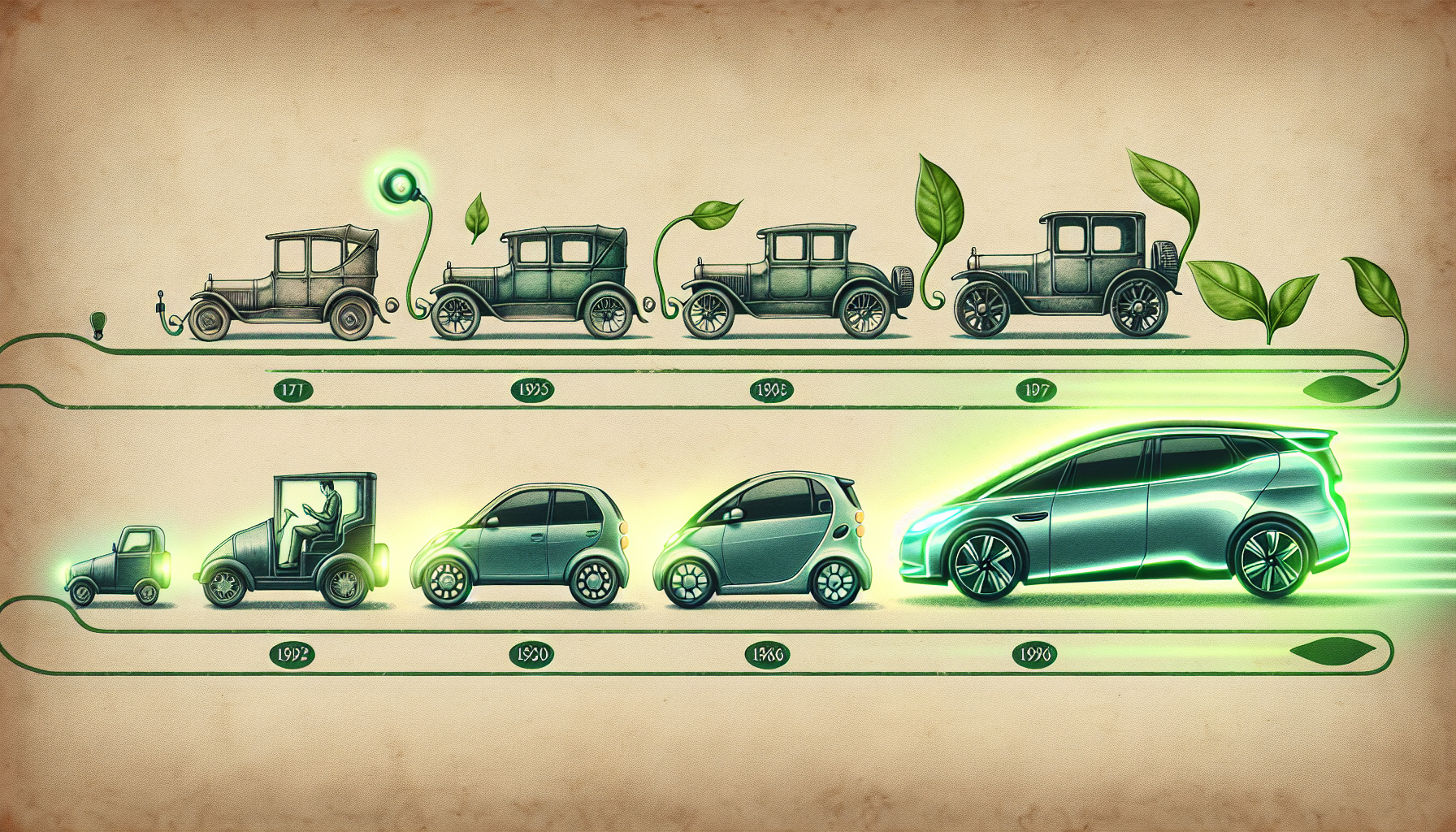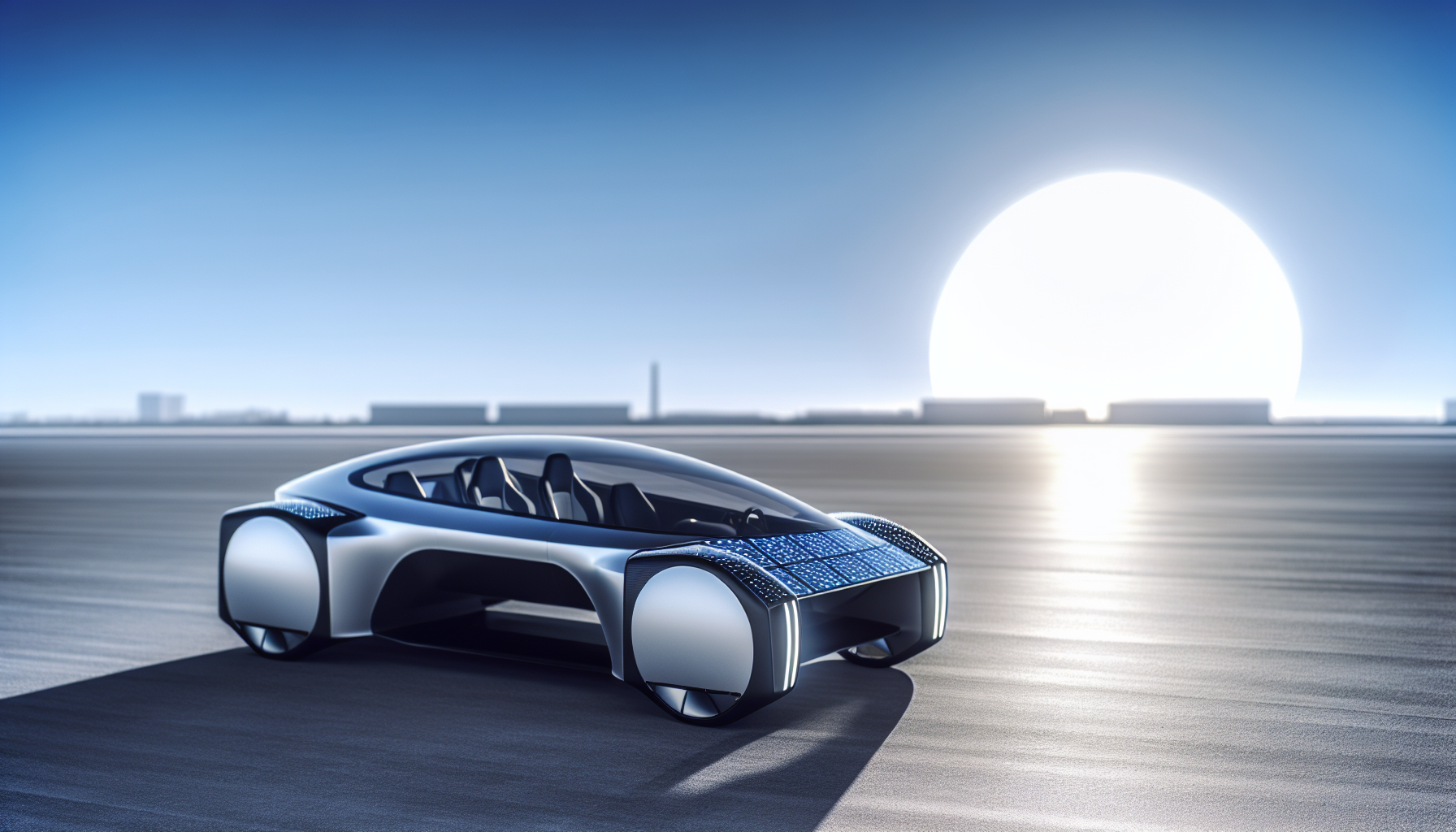The Evolution of Energy Efficient Cars and Their Impact on the Environment: Driving Towards a Cleaner Future
Energy efficient cars have evolved from simple concepts to complex machines capable of significantly reducing emissions. This transformation has profound implications for our environment. In exploring the evolution of energy efficient cars and their impact on the environment, we’ll map the advances in automotive technology that have led to this new era of eco-conscious driving. This overview provides a factual and chronological insight into the cars that have redefined efficient transportation, and their role in addressing ecological concerns.
Key Takeaways
-
Energy-efficient cars have evolved from early electric models to modern EVs with enhanced battery technology, driving range, and performance, reflecting a shift towards sustainability in consumer preferences.
-
The environmental impact of energy-efficient cars includes significantly reduced greenhouse gas emissions and improved air quality, contributing to a more sustainable and healthy planet.
-
Technological innovations, government incentives, and changing consumer attitudes are key factors accelerating the adoption of energy-efficient cars, with advances in autonomous driving and solar-powered vehicles paving the way for their future growth.
The Emergence of Energy Efficient Cars

The path to energy-efficient cars has been marked by evolution, experimentation, and technological innovation. It’s a story that begins with the early electric vehicles, ambles through the era of hybrids, and culminates in the sophisticated electric cars we see on our roads today.
This transition to energy-efficient cars signifies not only a progression in automobile technology, but also a profound change in societal values. As consumers increasingly prioritize sustainability and environmental responsibility, energy-efficient cars have gained traction as a viable, desirable alternative to conventional vehicles.
Early Electric Vehicles
Long before the roar of internal combustion engines filled our streets, there was the gentle hum of electric vehicles (EVs). The first electric vehicle, designed by chemist Robert Davidson, made its debut in 1837. Despite their silent operation and lack of emissions, these early EVs faced significant technological constraints, including limited range and inefficient lead-acid batteries.
Move to 2010, and the circumstances were quite similar. The range of electric cars remained limited, averaging less than 80 miles. However, a decade later, this figure had nearly tripled, thanks to advancements in battery technology and the development of solar batteries.
Rise of Hybrids
The late 20th century marked a significant milestone in the evolution of energy-efficient cars with the emergence of hybrid vehicles. The launch of the Toyota Prius in 1997 was a game-changer, establishing Toyota as a key player in the hybrid vehicle market and paving the way for the rise of battery electric vehicles.
Hybrids swiftly rose in popularity, making up over 30% of standard passenger vehicles sold worldwide by the end of the 20th century. These vehicles offered a compelling blend of improved fuel efficiency and reduced emissions, making them an attractive option for environmentally conscious consumers.
Modern Electric Cars

The dawn of the new century saw a remarkable leap in the development of energy-efficient cars with the revival of electric vehicles. Models like the Nissan Leaf and Mitsubishi i-MiEV, both electric car examples, led the charge, heralding a new era of electric vehicles.
Today’s electric vehicles offer:
-
800-volt battery technology
-
Ultra-fast charging capabilities
-
Innovative designs
-
Extended driving ranges
-
Enhanced performance and affordability
Furthermore, the integration of solar electricity into these vehicles has further enhanced their environmental benefits.
Environmental Benefits of Energy Efficient Cars

The progression towards energy-efficient cars signifies not only a technological transformation but also a vital stride towards a greener, healthier planet. These cars offer significant environmental benefits, including reduced greenhouse gas emissions and improved air quality.
Envision a world where the streets are dominated by vehicles that significantly reduce carbon dioxide emissions. This is the potential of energy-efficient cars. By reducing greenhouse gas emissions and improving air quality, these vehicles are paving the way for a sustainable transportation future.
Decreased Greenhouse Gas Emissions
One of the key environmental benefits of energy-efficient cars is their reduced greenhouse gas emissions. Here are some statistics to illustrate this:
-
Traditional vehicles emit an average of over 350 grams of CO2 per mile driven over their lifetimes.
-
Hybrid and plug-in hybrid cars emit around 260 grams of CO2 per mile.
-
Fully electric vehicles emit only 200 grams of CO2 per mile.
The implications of these reduced emissions are far-reaching. By reducing carbon dioxide emissions, we are not just slowing down climate change, but also paving the way for a sustainable future where transportation does not compromise the health of our planet.
Improved Air Quality
In addition to reducing greenhouse gas emissions, energy-efficient cars also contribute to improved air quality. Traditional vehicles are notorious for releasing a slew of air pollutants, which are associated with a host of health problems ranging from respiratory diseases to cancer.
Energy-efficient cars, on the other hand, emit significantly fewer of these harmful pollutants. The result is cleaner air, healthier communities, and a significant step towards combating air pollution.
Technological Advancements in Energy Efficient Cars

As we delve deeper into the world of energy-efficient cars, it’s impossible to overlook the role of technology. From improved battery technology and lightweight materials to regenerative braking systems, technological advancements have played a significant role in making these cars more efficient and appealing.
Indeed, such technological progress has turned energy-efficient cars from a niche product for the eco-conscious into a mainstream option for daily commuters. Let’s explore these advancements in more detail.
Battery Technology
Perhaps one of the most significant advancements in energy-efficient cars has been in battery technology. The advent of lithium-ion batteries has revolutionized the performance of electric vehicles, allowing for extended driving ranges and improved overall vehicle energy efficiency.
Moreover, the costs of electric vehicle batteries have significantly decreased over the years, making electric vehicles more affordable for the average consumer. These advancements have not only made electric vehicles more accessible but have also played a critical role in driving their popularity.
Lightweight Materials
Another crucial advancement in energy-efficient cars is the use of lightweight materials. By reducing the overall weight of the vehicle, these materials improve fuel efficiency and reduce emissions.
In addition to improving fuel efficiency, lightweight materials also have a significant impact on the performance of the vehicle. They allow for faster acceleration, improved handling, and better overall performance, making energy-efficient cars not just environmentally friendly, but also fun to drive.
Regenerative Braking
Regenerative braking systems represent another important technological advancement in energy-efficient cars. These systems:
-
Convert kinetic energy that’s typically lost during braking into electricity
-
Store the electricity in the battery
-
Use the stored electricity to power the vehicle.
Not only does this improve the efficiency of the vehicle, but it also extends the driving range and enhances the longevity of the braking system. It’s innovations like these that are making energy-efficient cars an increasingly attractive option for consumers around the world.
The Future of Energy Efficient Cars

Looking ahead, it’s evident that energy-efficient cars are not a fleeting inclination, but a definite path forward. With developments in autonomous driving and solar-powered vehicles on the horizon, the future of these vehicles looks bright indeed.
The future of energy-efficient cars is shaped by several factors, including:
-
Technological progress
-
Shifting attitudes towards sustainability
-
Changing policies and regulations
-
Evolving market trends
Let’s delve into these trends and explore what the future holds for energy-efficient cars.
Autonomous Driving
One of the exciting developments in the future of energy-efficient cars is autonomous driving. This technology has the potential to revolutionize the way we travel by optimizing driving patterns and reducing traffic congestion.
By maintaining consistent speeds, avoiding aggressive acceleration or braking, and selecting the most fuel-efficient routes, autonomous driving not only minimizes fuel consumption and greenhouse gas emissions but also leads to an overall increase in driving efficiency.
Solar-Powered Vehicles
Another promising development in the future of energy-efficient cars is solar-powered vehicles. These vehicles use solar panels to generate electric power through solar generation, often storing it in a solar battery, offering a sustainable and renewable source of solar power and solar energy resources, including thermal energy.
While there are still challenges to overcome, such as high initial costs and limited surface area for solar panels, the potential of solar photovoltaic-powered vehicles, also known as solar PV vehicles, is undeniable. With ongoing research and development, solar-powered vehicles could soon become a common sight on our roads, thanks to the advancements in solar PV systems and solar thermal technologies that harness solar radiation and store solar energy.
Government Policies and Incentives
Government policies and incentives have a significant part in endorsing energy-efficient cars. By providing subsidies, tax credits, and support for infrastructure development, governments around the world are encouraging consumers and manufacturers to embrace cleaner, more sustainable transportation.
From subsidies and tax credits to infrastructure development, let’s explore how government policies and incentives are driving the adoption of energy-efficient cars.
Subsidies and Tax Credits
Government subsidies and tax credits have been instrumental in promoting the adoption of energy-efficient cars. By making these vehicles more financially accessible, these incentives are encouraging consumers to switch to cleaner transportation options.
These incentives not only make energy-efficient cars more affordable, but they also stimulate market growth, making them an attractive investment for manufacturers.
Infrastructure Development
Infrastructure development is another crucial aspect of promoting energy-efficient cars. By investing in charging stations and grid improvements for large scale power generation, governments are ensuring that electric vehicles are practical and convenient for everyday use.
The availability of charging infrastructure plays a crucial role in promoting the practicality and widespread adoption of electric vehicles. With over 3,000 EV public charging points available in Australia, for example, it’s clear that infrastructure development is key to the success of energy-efficient cars.
Consumer Attitudes and Market Trends
Consumer attitudes and market trends form a vital aspect of the energy-efficient car scenario. From a growing demand for electric vehicles to the increasing role of car-sharing and ride-hailing services, these trends are shaping the future of energy-efficient cars.
As consumers become more conscious of their environmental impact and look for ways to reduce their carbon footprint, the demand for energy-efficient cars is only set to grow.
Growing Demand for Electric Vehicles
The demand for electric vehicles is on the rise. Driven by environmental concerns, technological advancements, and supportive government policies, more and more consumers are choosing electric vehicles over conventional cars.
Environmental awareness is not the only factor driving this demand. Technological advancements such as extended battery range, faster charging capabilities, and reduced prices have made electric vehicles more accessible and appealing to a wider consumer base.
The Role of Car Sharing and Ride-Hailing Services
Car-sharing and ride-hailing services are playing an increasingly important role in the adoption of energy-efficient cars. By offering convenient and eco-friendly transportation options, these services are making energy-efficient cars a viable choice for a wider range of consumers.
The transition to electric vehicles not only results in significant CO2 reductions but also offers improved economic prospects for drivers.
Summary
From the early electric vehicles of the 19th century to the advanced electric cars of today, the journey of energy-efficient cars has been marked by continuous innovation and evolution. These vehicles offer numerous environmental benefits, including reduced greenhouse gas emissions and improved air quality, and their popularity is only set to increase in the future.
As we look ahead, the future of energy-efficient cars is bright. The advent of autonomous driving and solar-powered vehicles, coupled with supportive government policies and changing consumer attitudes, indicate that energy-efficient cars are not just a passing trend, but the way forward. So, are you ready to join the drive towards a cleaner, more sustainable future?
Frequently Asked Questions
What is the environmental impact of electric vehicles?
Electric vehicles typically have a smaller carbon footprint than gasoline cars, even when accounting for the electricity used for charging, and they have no tailpipe emissions. This makes them better for the climate than gasoline cars.
Why are energy efficient vehicles important?
Energy efficient vehicles are important because they produce fewer CO2 emissions, reducing their impact on the environment and contributing to climate change. Additionally, they consume less fuel and are less expensive to run.
What is the advantage and disadvantage of electric cars?
Electric cars are efficient and quiet, with instant acceleration, but they can be expensive and have limited public charging infrastructure. In the coming years, we expect the charging infrastructure to improve, addressing this disadvantage.
How does solar electricity work?
Solar electricity works by converting the sun's light into electricity through solar panels and an inverter. The panels absorb sunlight to create direct current (DC), and the inverter converts it into usable alternating current (AC) for your home.
How have energy-efficient cars evolved over the years?
Energy-efficient cars have evolved from early electric vehicles in the 19th century to the rise of hybrid cars in the late 20th century, and the advent of modern electric cars. The evolution showcases a significant shift towards more sustainable transportation.








